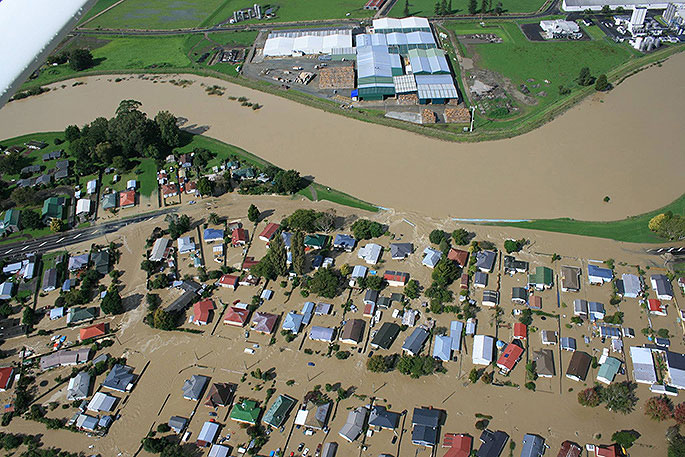An independent review of the Whakatane District Council's response to the April flooding and storm emergency has highlighted 'many positives”, as well as improvement areas for local, regional and national emergency management organisations to consider.
The review by Kestrel Group was commissioned by the Council to gain an independent perspective on the extent that its Civil Defence response actions met the expectations and requirements for a district council responding to a flood event; and to identify improvement opportunities to strengthen future emergency management activities.
In his report of findings to the Council last week Kestrel Group principal Dave Brunsdon says the emergency response was 'generally well-organised and effective”.
'Amongst the many positives identified, it was clear that the Emergency Operations Centre activities were well-led by the Controllers and team leaders'” he says.
'The Mayor, elected members and Chief Executive provided a very effective linkage with the community and the response was well-supported by other agencies, particularly Emergency Management Bay of Plenty.”
Dave says the many forms of volunteer input also played a significant role in reducing the impacts of the event on the community and assisting the early stages of the emergency recovery.
Improvement areas centred on five key themes:
Updating operational plans and including stop bank breaches as a specific flooding scenario;
Ensuring EOC teams are consistently resourced with a trained local presence;
Understanding the relationship between Civil Defence and the Council as a whole;
Improving the connection between the EOC and key community sectors; and
Greater clarity around local resourcing expectations under the centralised, regional emergency management model.
The review makes 16 recommendations, which Mayor Tony Bonne says will be prioritised and worked through in conjunction with Emergency Management BOP and other external agencies as a matter of urgency.
'It's notable that the evacuation of Edgecumbe was the largest evacuation of a community ever undertaken during a New Zealand Civil Defence emergency and the way the wider community and emergency services rallied together was a credit to all involved,” says Tony.
'While we can be generally pleased with our emergency response, we have undoubtedly taken some key learnings from this event.
'Local resourcing in an extended emergency situation will always present challenges for smaller local authorities like ours and the recommendations around EOC staffing and access to people with the right training and expertise are key areas for us to work on.
'Better and earlier involvement with iwi and other support agencies in Civil Defence planning will also help ensure we are better prepared in future to deliver effective emergency response actions for affected communities.”
The report also identifies a number of successful early recovery phase initiatives which 'put people's needs first”. These included early engagement with insurers; a simplified approach to, and provision of free building consents for flood repairs; coordinated removal of flood-damaged material from houses and disposal of hazardous building waste; and the ‘Liveable Homes' programme to assist people who did not have the means to repair their homes.
The Kestrel Report (and a shorter summary document) on the Council's flood response will be available on the WDC website from 19 September www.whakatane.govt.nz



0 comments
Leave a Comment
You must be logged in to make a comment.